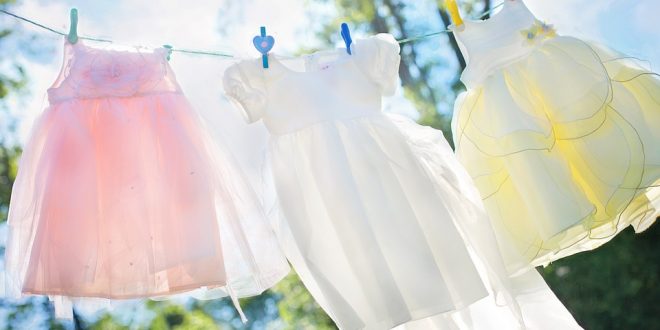By: Eileen Guo
If you’re the type who dons new duds without washing them first, there’s a chance you may pay a price for it a few days later: a red, itchy, painful price.
Allergic contact dermatitis is an immune system-related reaction to an allergen that has come into contact with your skin. It causes a delayed reaction: a rash that appears a few days after exposure, that can last for several weeks, usually from disperse dyes. Disperse dyes are primarily used in synthetic clothing materials like polyester and nylon, and they may be present at higher levels in a brand-new, unwashed article of clothing.
Sweating and friction can cause disperse dye to leach out of clothing. Synthetic workout gear—the shiny, stretchy, water-repelling materials that are so popular nowadays—are often the culprit for allergic contact dermatitis.
It’s not clear how common disperse-dye allergies are among the general public. But there is one way to limit your risk for bad reactions: by washing new clothing. You might remove a little extra dye, but will also have a lower risk for rashes.
In very rare cases, taking this step could even prevent the development of a new allergy. If enough of the dye leached onto a skinned knee or other open wound, it could activate the immune system and create a lasting sensitivity.
Allergic rashes aren’t the only health issue associated with clothing chemicals. In a 2014 study, a group of researchers from Stockholm University in Sweden tested 31 clothing samples purchased at retail stores, and that were “diverse in color, material, brand, country of manufacture, and price, and intended for a broad market.” They found a type of chemical compound called “quinoline” (or one of its derivatives) in 29 of the 31 samples, and the levels of this chemical tended to be especially high in polyester garments. Quinoline is used in clothing dyes, and the U.S. Environmental Protection Agency has classified it as a “possible human carcinogen” based on some studies linking it to “tumor-initiating activity” in mice—though the agency also states that no human studies have been conducted to assess the cancer-causing potential of quinoline.
Although washing your new clothes may not completely prevent clothing chemicals from breaking off and leaching onto your skin or into the air you breathe, washing the clothes reduces the residual chemical levels that may be leftover from the manufacturing process, preventing many potential allergic reactions.
 Tempus Magazine By Students, For Students
Tempus Magazine By Students, For Students 



